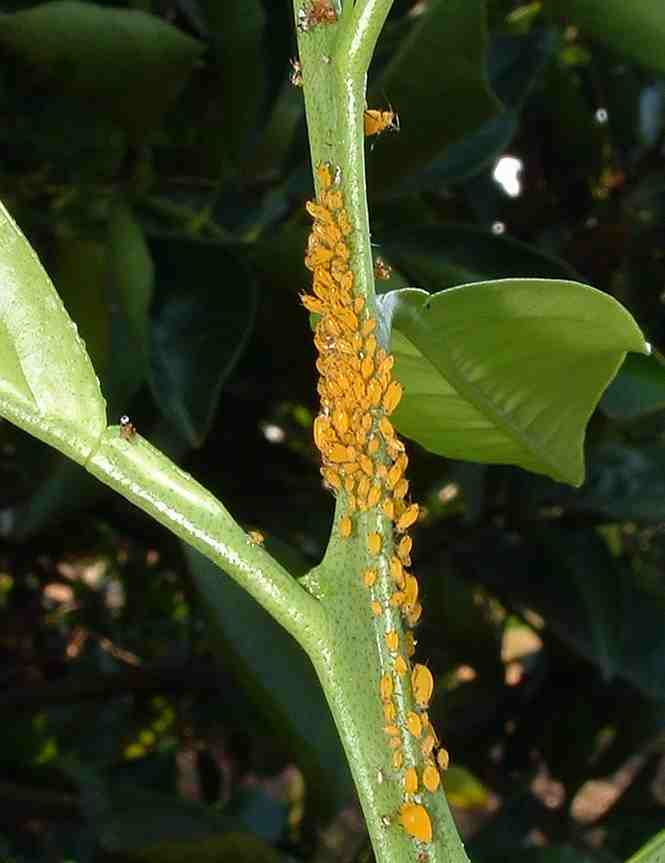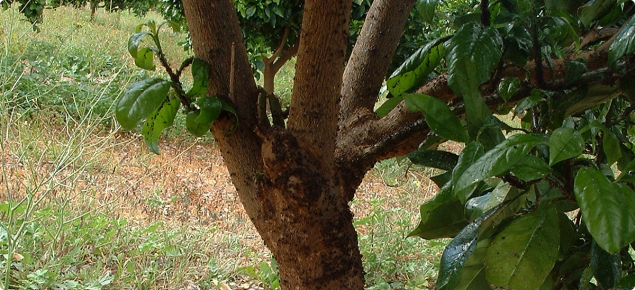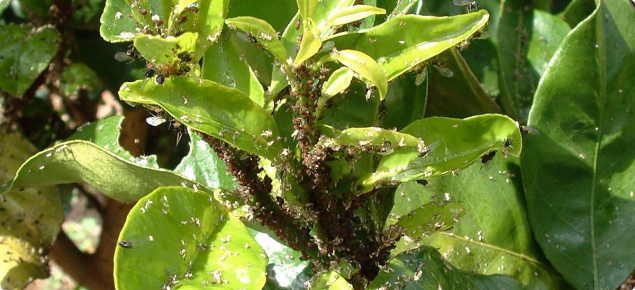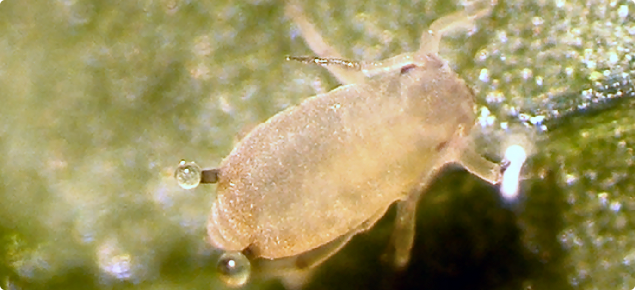Damage
- All aphids have a piercing-sucking mouthpart (stylet) that they insert into the plant tissue to feed on leaves, green shoots and flowers. Leaves may curl as a result of feeding damage.
- Large quantities of honeydew are also produced as the aphid feeds. Leaves and fruit often turn black with the growth of the sooty mould fungus.
- Aphids are not usually a problem in citrus, except on young trees.
- Overseas, black citrus aphid has been associated with the spread of citrus tristeza virus which causes dieback.
Life cycle
- Females do not need to mate to produce young and no eggs are laid. Live young are produced through a process termed parthenogenesis.
- Female aphids are born pregnant and adult females can be wingless or winged.
- The presence of winged forms (alates) indicate that the food quality has declined, or that there is overcrowding.

Brown/black citrus aphid, Toxoptera citricidus (Kirkaldy)
This aphid is found in all Western Australian citrus growing areas.
- Nymph: pear-shaped, red-brown, brown to black, 1-2mm long
- Adult: shiny black, 2mm long, winged or wingless.
Life cycle
- An entire generation can develop in one week.
- Nymphs mature in 6-8 days at temperatures of 20ºC or above. A single aphid can produce a population of over 4400 in three weeks in the absence of natural enemies.
- 25–30 generations per year.
Monitoring
Young trees from February to March and then again September to December.
Action level
25% or more of leaf flushes infested with aphids.

Spiraea aphid, Aphis spiraecola (Patch)
Regarded as rare in WA citrus.
- Nymph: pear-shaped, apple green to bright yellow, 2mm long
- Adult: apple green, 2mm long, winged or wingless.
Life cycle
An entire generation can develop in one week, with females each producing 60 young.
- Up to 25 generations per year.
Monitoring
Young trees from February to March and September to December.
Action level
25% or more of leaf flushes.
Management

Chemical control
- Natural enemies normally keep aphid populations under control, and chemical control is rarely required.
- Use a specific aphicide or horticultural spray oil if required. Commercial growers should consult their nearest agrichemical supplier or the APVMA for registered pesticides.
- Always check the label before spraying, as not all oils are registered for use in citrus. Oils can also cause phytotoxic damage if not used correctly, such as when plants are heat or water stressed.
Biological control
- Predators, parasites, and fungal diseases all attack aphids and occur naturally in the orchard. The honeydew produced by the aphids provides a good food source for many natural enemies, as well as pests such as ants.
- Aphid parasites include the wasp genera Aphidius and Aphelinus: neither is available commercially. The female wasps lay their eggs individually inside the lower part of the abdomen of young nymphs. The parasitised nymphs appear bloated and bronze in colour.
- Aphids are attacked by many generalist predators include hoverfly larvae (syrphids), ladybird beetles and lacewing larvae.





